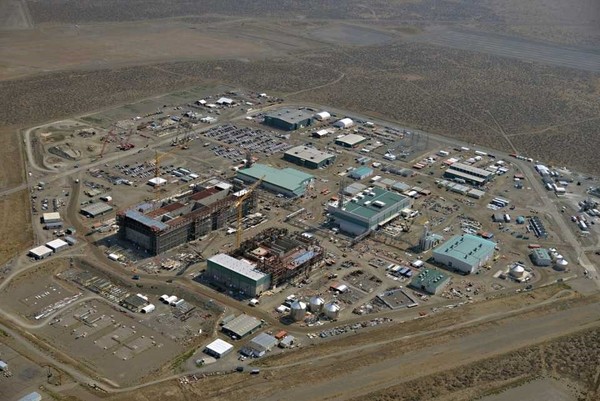"Back End of the Cold War," by Paul Bredt

Abstract
Founded as part of the Manhattan Project, the Hanford Site in southeastern Washington State was critical to the production and purification of 67 metric tons of plutonium for national defense. While production ceased in 1990, there is still a sizable cleanup mission ahead. Hundreds of billions of gallons of liquid were discharged to the ground, leaving contaminated soil and groundwater, and highly contaminated production facilities must be maintained in safe configurations pending final closure. In addition, approximately 200 million liters of highly radioactive slurries are stored in 177 aging underground tanks. This tank waste is one of the most serious challenges on the site. The Department of Energy (DOE) is constructing the Hanford Waste Treatment Plant to convert this waste into recalcitrant solid wasteforms. With an approximate 40-year mission and construction and operating costs estimated at $300 billion, it is one of the largest financial liabilities of the United States government. However, the sheer volume and hazard, complexity and continually evolving chemistry, stakeholder expectations, nuclear construction standards, and aging of the tanks themselves have all conspired to delay construction and drive DOE to rethink the treatment baseline.
Scientists and engineers at what is now Pacific Northwest National Laboratory (PNNL) were instrumental in the design and operation of facilities that generated these wastes, have developed most of the unit operations planned for the Hanford Waste Treatment Plant, and will be supporting operations through the treatment mission. This presentation will include a history of the Hanford site, the baseline flowsheet and alternatives under consideration for tank waste treatment, as well as a brief summary of PNNL.
Biography

Paul Bredt received his doctorate in physical chemistry from the University of California at Irvine. He has been with Pacific Northwest National Laboratory since 1993, leading increasingly complex assignments in the area of nuclear science and technology. He is currently the Director of the Nuclear Sciences Division within the Energy and Environment Directorate, a position he has held since March 2013. In this role, Dr. Bredt has been instrumental in renewing PNNL’s nuclear science strategy and revitalizing the capabilities of the Radiochemical Processing Laboratory, PNNL’s cornerstone Hazard Category II nuclear facility. He is current focus is expanding PNNL’s work on advanced nuclear fuels and molten salt chemistry. Prior to this, he led the Environmental Health and Remediation market sector, a $100M portfolio serving government and industrial sponsors. For the U.S. Department of Energy’s Office of Environmental Management, Dr. Bredt has served as a Deputy National Technology Advisor, Initiative Lead for Advanced Unit Operations and Scaling, and Advisor to the Tank Waste Corporate Board. He has extensive line management experience, having led PNNL’s Advanced Processing and Applications group from 2005 to 2009 and the Separations and Radiochemistry team prior to that. Dr. Bredt has served in several other key assignments at PNNL, including program manager for the Environmental Management Science Program and task manager for several high-visibility Hanford remediation projects.
Seminar sponsored by the Department of Civil and Environmental Engineering and Earth Sciences